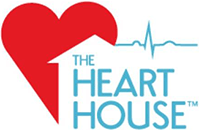Understanding Edema
Edema is a condition that causes excessive fluid buildup (commonly in the legs), resulting in swelling, aching, heaviness, fatigue, and leg cramps in the affected area(s).
What You Should Know:
Though not directly related, edema can also mimic symptoms associated with Peripheral Vascular Diseases (PVDs) such as Peripheral Artery Disease (PAD). Edema most commonly occurs in the legs and feet but can also develop in the hands, arms, and other areas.
Types of Edema:
Types of Edema:
- Peripheral edema is swelling in the extremities, such as the ankles and feet, caused by the retention of fluid due to impaired circulation, lymphatic drainage, or kidney disease. The swelling is usually bilateral and may cause mild discomfort, tightness, or a heavy feeling.
- Pulmonary edema involves fluid accumulation in the lungs, often due to heart failure or kidney disease. This impairs breathing function and oxygenation of the blood. Symptoms include shortness of breath, especially when lying down, coughing, and wheezing or rattling sounds when breathing.
- Cerebral edema is swelling in the brain, usually due to a head injury, stroke, or brain tumor. This increases intracranial pressure with potentially serious complications ranging from headache, nausea, and vomiting to altered mental status, visual disturbances, and seizures.
Could your leg discomfort be Peripheral Artery Disease (PAD)?
Take Our Free Online Assessment to Find Out
Peripheral artery disease (PAD) is a common circulatory condition that can lead to leg pain and walking problems. If you are experiencing edema along with other symptoms such as shortness of breath or chest pain, you could be at risk for PAD. Our easy-to-use online self-assessment can help determine if you may be at risk for PAD and if you should make an appointment with one of our highly trained vascular specialists.
Causes & Symptoms of Edema
Symptoms of edema depend on the location but may include visible swelling, stretching or tightness of the skin, heaviness, aching or cramping, and limited flexibility of the affected limb or joint. Shortness of breath can occur with pulmonary edema. Reduced circulation with chronic edema can lead to skin changes.
There are several potential causes of edema, including:
Chronic Venous Insufficiency (CVI) - Damaged valves in leg veins that allow blood to pool and leak into surrounding tissue, leading to swelling.
There are several potential causes of edema, including:
Chronic Venous Insufficiency (CVI) - Damaged valves in leg veins that allow blood to pool and leak into surrounding tissue, leading to swelling.
- Heart Failure - Impaired pumping function of the heart, resulting in fluid backup and peripheral edema, often in the legs and feet. The edema may be worse at night and with activity.
- Kidney Disease - When kidneys have trouble filtering fluid and regulating electrolytes, allowing fluid retention and generalized swelling.
- Liver Disease - which can allow fluids to move from blood vessels to surrounding tissues because there's less pressure to keep them in the blood vessels.
- Lymphedema - Blockage of lymph vessels or nodes that obstruct proper drainage, resulting in swelling of a limb – often an arm or leg.
- Medications - Drugs like corticosteroids, estrogen, NSAIDs, and calcium channel blockers with which edema can be a side effect.
- Pregnancy - Hormonal changes and increased blood volume during pregnancy which can lead to mild swelling in the feet and ankles.
Testing & Diagnosis Options for Edema
To diagnose edema, a vascular specialist will perform a physical exam to inspect the swollen area. From there, the doctor may request a blood test to check kidney function, electrolyte levels, and proteins that help regulate fluid balance. Additional diagnostic tests may include:
- Urinalysis: Checks for signs of kidney disease or failure leading to fluid retention.
- Imaging: An ultrasound can visualize fluid accumulation and blockages. A chest X-ray detects pulmonary edema.
- Echocardiogram: Evaluates heart function to check for congestive heart failure.
- Doppler Study: Assesses circulation and venous insufficiency that could cause leg edema.
- Lymphoscintigraphy: Tracks lymph drainage using a radioactive tracer to identify lymphedema.
- Biopsy: Examines skin and tissue to help differentiate causes of edema.
- Venous Refill Time Test: Measures the rate at which compressed leg veins refill with blood.
Treatment Planning for Edema
Identifying and treating the underlying medical issue is the key to managing edema. This may involve conservative treatments such as medications and lifestyle changes to improve heart function. Diuretics, compression stockings, and massage techniques can also be used to drain excess fluid from the body.
Lifestyle changes such as losing excess weight, exercising regularly, and avoiding prolonged standing may also be recommended to prevent or control edema symptoms.
If symptoms do not respond to milder forms of treatment, surgery may be an option. There are several advanced procedures to treat edema and other common vascular conditions. Possible options may include:
Lifestyle changes such as losing excess weight, exercising regularly, and avoiding prolonged standing may also be recommended to prevent or control edema symptoms.
If symptoms do not respond to milder forms of treatment, surgery may be an option. There are several advanced procedures to treat edema and other common vascular conditions. Possible options may include:
- Vein Stripping - A procedure used to remove damaged, enlarged leg veins with faulty valves that are contributing to edema.
- Venous Bypass - A procedure that redirects blood flow around blocked leg veins to reduce pressure and leakage into tissues.
- Vein Ligation - A procedure that “ties off” dysfunctional leg veins to prevent backflow of blood.
- Lymphovenous Bypass - A procedure that connects lymph vessels to tiny veins to improve lymph drainage and reduce lymphedema swelling.
- Lymph Node Transfer - A procedure that transfers healthy lymph nodes to areas with impaired lymph drainage to improve flow.
- Debulking - A procedure that removes excess fatty and fibrous tissue buildup under the skin resulting from lymphedema.
Photo Gallery
Video Gallery
Testimonials
Photo Gallery
Discover awe-inspiring transformations in our "Before and After" gallery, showcasing the remarkable impact of cardiovascular surgery on our patients' health and well-being.
ALL
Currently no images available
Risks if Left Untreated
If you notice signs of edema, do not wait to seek treatment. Additional symptoms such as stretched or shiny skin, shortness of breath, chest pain, or skin that dimples after touching it can indicate a more serious underlying condition, such as Peripheral Artery Disease (PAD). Furthermore, edema can potentially lead to complications, such as skin breakdown, reduced mobility, fibrosis, blood clots, permanent swelling, decreased kidney function, respiratory impairment, and more.
Get To Know Our Cardiovascular Specialists
When it comes to your vascular health, you are in expert hands at The Heart House. Our skilled vascular specialists will ensure that you receive the highest quality of care throughout the entire treatment process.
In Search of Care? Request a Consultation Today
If you are experiencing symptoms of edema or PAD, such as swelling, leg pain, numbness, or weakness, don't hesitate to seek professional evaluation. Early intervention can help effectively manage symptoms and improve your quality of life. Request a consultation today.





